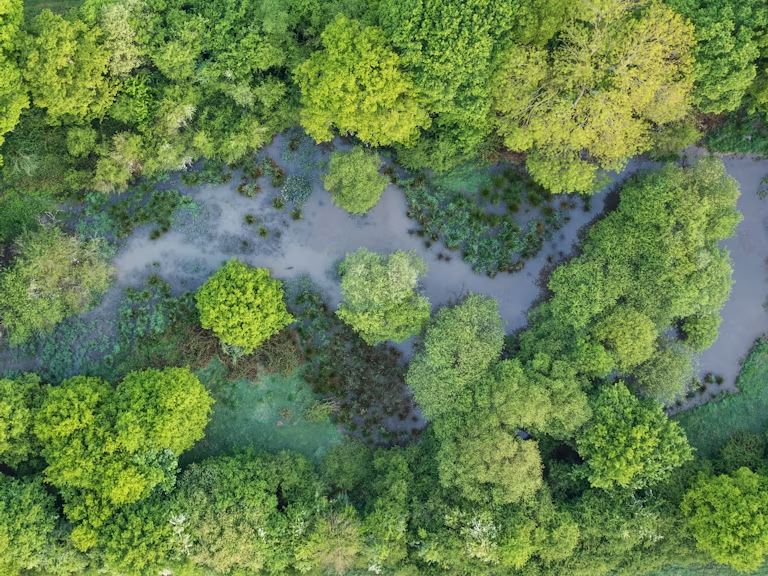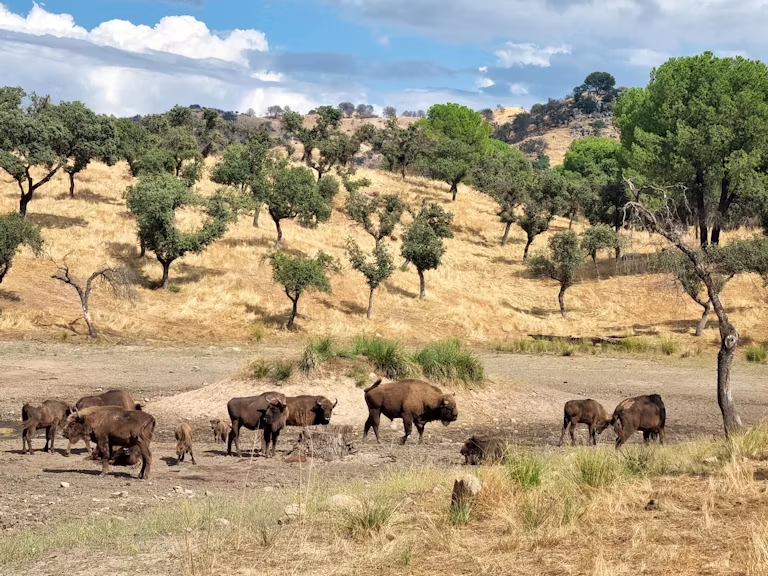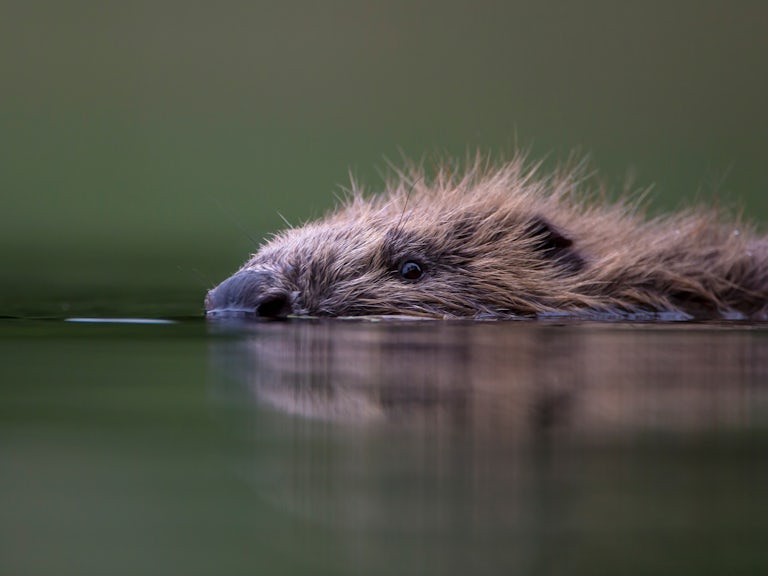Rewilding to enable natural flood management
If we can rewild river catchments and floodplains, we can ease some of the severity of flooding across Britain.
Published 13/03/2020
In this article:
- Over-grazing, tree felling and other disturbances over time reduce the ability of land to absorb water
- Nature is a powerful ally in flood prevention but natural flood management makes up less than one per cent of the flood defence budget — it should be around 20 times that
- Rewilding actions across the country provide evidence of reducing peak water volumes and slowing run-off from hills
Watching the flood across England and Wales over the last few months has been depressing. At Rewilding Britain, we feel for everyone whose homes and lives are being so grimly disrupted or destroyed. It’s especially frustrating when flood experts around the country know that so much more can be done.
Rewilding Britain director, Alastair Driver, worked alongside flood defence policy teams as Head of Conservation at the Environment Agency for 14 years, and before that he was an ecological advisor for hundreds of flood defence projects as the first conservation officer for the Thames Catchment for nearly 20 years. He’s seen first hand what the problems are across the country and understands intimately how rewilding can be a key part of the solution.
“Flooding is a natural part of a river’s annual cycle but problems occur when land is overgrazed, rivers are straightened, and trees and other natural vegetation is removed,” he says. “These disturbances have conspired over time to reduce the capacity of the landscape to absorb excess water and slow floodwater flows.”
Symptom not the cause
Flooding costs the UK economy more than £1 billion annually – a figure that rises to nearer £5 billion in a bad year. Traditional approaches to flood defence focus on managing flood risk using hard defences such as floodwalls and river revetments. While mitigating some of the worst consequences of flooding, these do little to challenge underlying causes – and when they fail, the consequences can be devastating.
Managing flood risk naturally through rewilding can be cheaper and more sustainable. Rewilding – which includes the restoration of woodlands and wetlands and even the reintroduction of the beaver – can substantially reduce flood risk downstream.
“During the recent floods we heard a lot about ‘rain falling on already saturated ground’ but in many places this is not the case,” says Alastair. “Yes, most floodplains were saturated in the early stages of the recent sustained rainfall events, but many hillsides were not. This is because water is running off compacted soils on sloping ground before it has a chance to soak in, resulting in floodplain storage becoming fully utilised much earlier in long-term rainfall events than it should be. We have to think soils.”
Let natural processes work
Rewilding tackles this sort of issue by helping natural processes work. For example, tree roots stretch deep into the ground increasing water filtration rates. Natural processes can protect communities at a fraction of the cost of traditional flood defences.
“Working with natural processes is not the whole solution but we know it has a significant part to play,” says Alastair. “Currently natural flood management makes up less than 1% of the flood defence budget but it is potentially around 20% of the solution. We are way off where we should be.”
And of course, it’s about more than just flooding. Rewilding can improve water quality and stimulate the revival of vibrant ecosystems rich in wildlife. It can create healthy natural landscapes that help to stimulate tourism and ecological awareness, while soaking up greater quantities of carbon.
Examples of rewilding projects that have significantly reduced flood risk in communities:
Flood storage and leaky dams
Moorland restoration, Holnicote Estate in West Somerset
The National Trust recreated floodplain storage and installed woody dams to mimic beaver activity. During winter 2013’s unprecedented rainfall, there was no flooding in villages that regularly suffered in the past. There was also a 10% reduction in flood peak in late December 2013 on an already saturated catchment containing over 90 properties at risk. Beavers have now been introduced to Holnicote so they can help by doing what comes naturally…
Beaver engineering
Devon Wildlife Trust Beaver enclosure
The Devon Wildlife Trust’s beaver enclosure has seen beavers dramatically alter the landscape, stimulating the revival of a natural wet woodland – home to a diverse range of wildlife. They have significantly increased water storage while slowing the flow of water downstream – valuable services at times of drought and after storms. During storm events, there was on average 30% lower peak volume of water leaving the site, compared with entering – reducing flood risk downstream.
Rewilding moorland with grasses and plants
At the headwaters of the River Derwent, on the highest plateau in the Peak District National Park, Moors for the Future replanted peat bogs with moorland grasses, heathers and other plants. Average peak flows reduced by 30% and average run-off slowed by around 20 minutes.
Floodplain woodlands and leaky dams
Replicating nature by placing ‘leaky dams’ composed of tree branches and trunks upriver along the River Ouse. Alongside this, floodplain woodlands have been created with the planting of 23,000 trees and 3.5 kilometres of hedgerow. This increases the landscape’s natural ability to absorb excess water and reduce flood.
Floodplain meadows have become one of Sussex’s most threatened habitats, but left alone can support diverse and dynamic ecosystems and store carbon. Such measures are also substantially cheaper than traditional flood defence schemes.

Explore our Rewilding Manifesto
We need UK Government to Think Big and Act Wild for nature, people and planet.
Learn more
Our vision
We have big ambitions. Find out what we’ve set out to achieve through rewilding.
Our 2025-2030 strategy



